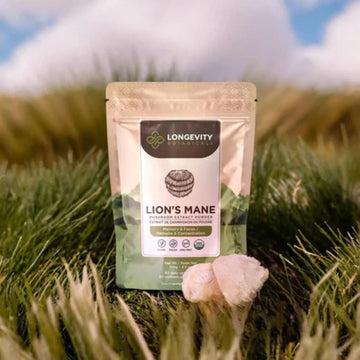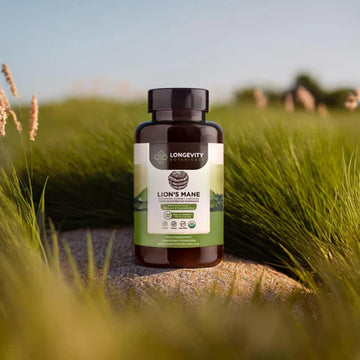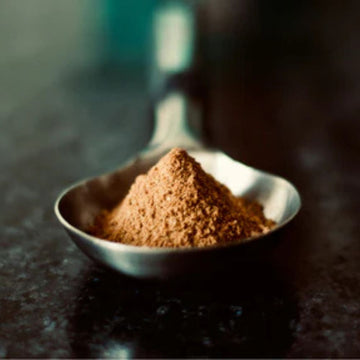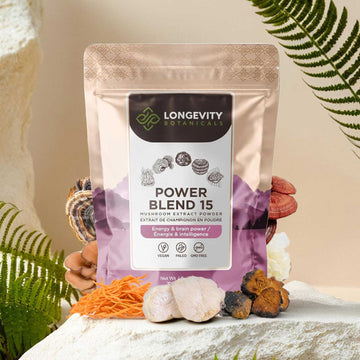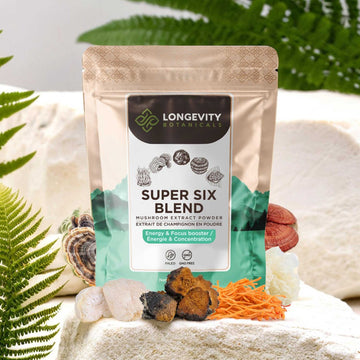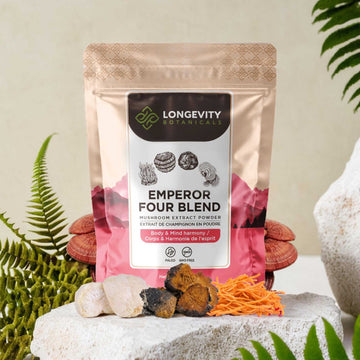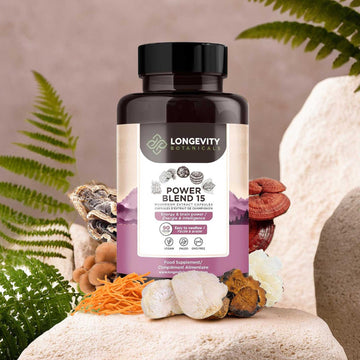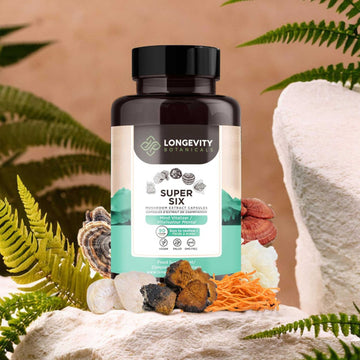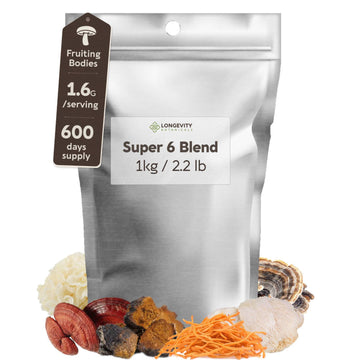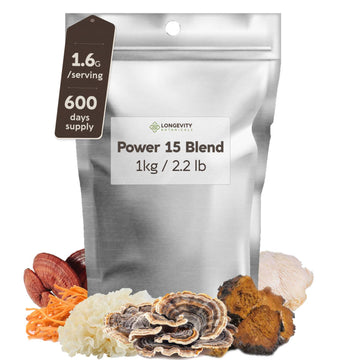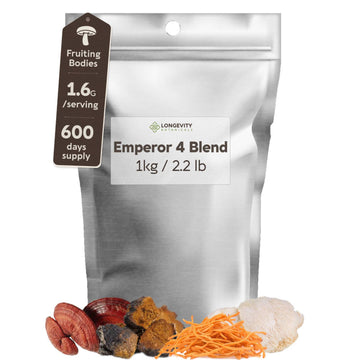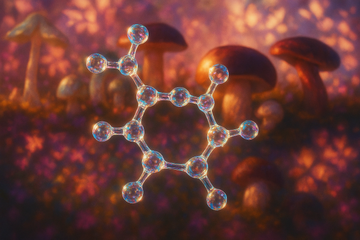Why this unfamiliar amino acid deserves top billing in your wellness plan
Mushrooms are packed with health-promoting molecules, yet one compound rises above the rest for its breadth of cellular protection. That molecule is ergothioneine, often shortened to EGT. It is a sulfur-containing amino acid that your body cannot manufacture, cannot easily get from plants, and, remarkably, pulls from circulation into tissues with a dedicated protein transporter. Evolution rarely grants a single dietary molecule its own cellular doorway, so when it does, scientists pay attention.
Researchers now call EGT a “longevity vitamin” because population data link higher blood levels to slower cognitive decline and lower chronic-disease risk, while animal experiments show longer, healthier life spans after lifelong supplementation. Unlike vitamins C and E, which wash out of cells quickly, EGT stores inside mitochondria, nuclei, and cellular membranes for weeks at a time, standing guard against oxidative insults that accelerate aging.
Where does ergothioneine come from?
The fungal advantage: Fungi thrive in dark, microbe-dense niches where oxidative stress is common. Over millions of years they evolved EGT as an ultra-stable antioxidant defense. Culinary mushrooms—shiitake, oyster, enoki, porcini, and especially king oyster—accumulate the highest concentrations. Very small amounts appear in oats and beans, but a single mushroom serving can supply 20 times more EGT than an equivalent plate of legumes.
Food vs supplement intake: A hearty stir-fry featuring 150 g of mixed mushrooms may deliver three to six milligrams of EGT. Observational studies suggest five to ten milligrams per day is a prudent goal for healthy aging, so most people will meet that target only when mushrooms are a menu staple or when they add a concentrated extract.
How EGT travels through your body
Absorption begins in the small intestine. The OCTN-1 transporter, sitting in the gut lining, recognizes EGT and shuttles it efficiently into the bloodstream. Within hours the same transporter pulls EGT into red blood cells, liver tissue, brain regions, and even the eye lens, where it helps neutralize UV-generated free radicals. Because OCTN-1 expression rises in tissues under stress, EGT is preferentially stockpiled exactly where extra antioxidant firepower is most needed.
Four clear ways ergothioneine shields your cells from age-accelerating stress
1. Direct free-radical scavenging. The sulfur atom in EGT’s unique imidazole ring grabs reactive oxygen species before they can nick DNA or damage proteins, acting like a fire extinguisher inside the cell.
2. Mitochondrial safeguard. EGT embeds in the inner mitochondrial membrane, reducing electron leakage and protecting the power-house machinery that drives metabolism. Healthier mitochondria translate to steadier energy and less age-related fatigue.
3. Inflammation modulation. Studies show EGT lowers NF-κB signaling and shifts immune cells toward a calming, M2-type profile. This effect is central to tamping down the chronic, low-grade inflammation that underpins many degenerative diseases.
4. Autophagy support. Animal work indicates EGT nudges cells to recycle damaged components more efficiently, a hallmark process tied to longevity and metabolic resilience.
What the latest science says about longevity benefits
Lifespan extension in mice. A 2024 study fed male C57BL/6J mice water containing about five milligrams per kilogram per day of EGT from young adulthood onward. Median lifespan increased sixteen percent and mobility scores stayed high into late life compared with controls. Read the study
Human cognitive-aging cohort. Singapore researchers tracked 470 older adults for five years. Volunteers in the lowest blood-EGT quartile experienced almost double the rate of memory and processing-speed decline compared with the highest quartile, suggesting low EGT is a red flag for accelerated brain aging. Explore the findings
Cellular rescue in cartilage cells. Human chondrocytes exposed to hydrogen peroxide lost viability and showed mitochondrial fragmentation, yet adding fifty to two-hundred micromolar EGT preserved cell integrity and slashed reactive-oxygen markers. The result hints at joint-protection potential in osteoarthritis models.
Take-home message: Across animal, human, and cellular lines of evidence, EGT repeatedly shows it can slow the physiological wear-and-tear that defines aging.
How to reach the five-to-ten-milligram daily target
Cook more mushrooms. Include at least one cup of sautéed shiitake, oyster, or enoki daily. Gentle, moist heat is best because prolonged grilling can degrade EGT.
Use mushroom powders in smoothies or soups. A single teaspoon of concentrated lion’s mane or turkey tail extract supplies one to three milligrams of EGT along with immune-supporting beta-glucans.
Lean on well-made supplements when produce is scarce. Look for labels that specify gram-equivalent fruiting body content and third-party purity testing.
Fruiting body versus mycelium: why it matters
Mushroom fruiting bodies—the stalk and cap—contain much higher concentrations of bioactive compounds than laboratory-grown mycelium. Fruiting bodies avoid grain filler, offer denser beta-glucans, and provide purer EGT levels. Supplements that rely on grain-based mycelium often test high in starch and low in active ingredients, so you pay for bulk rather than benefit.
The role of bio-enhanced water extraction
Extraction method is equally critical. Bio-enhanced water extraction uses enzymes, optimized temperature, and precise pressure to crack the tough chitin walls of mushroom cells, freeing water-soluble compounds like EGT without harsh solvents. This process improves yield, potency, and bioavailability while remaining eco-friendly.
Longevity Botanicals relies on this very method for its concentrated powders. For example, Lion’s Mane Extract and the all-in-one Super Six Blend list verified beta-glucan percentages and batch-tested purity. Those transparent metrics ensure you receive true fruiting-body power, not diluted grain powder.
Fast kitchen tips for maximizing ergothioneine
- Do not rinse sliced mushrooms under running water. EGT is water-soluble and surface amounts can wash away.
- Store mushrooms in a paper bag in the refrigerator. Excess moisture accelerates spoilage and may lower antioxidant content.
- Add a splash of lemon juice or bell-pepper strips when cooking. Vitamin C helps regenerate the overall antioxidant network, supporting EGT’s activity.
Two easy, EGT-rich recipes
1. Five-Minute Shiitake Stir-In: Sauté one cup sliced shiitake in a teaspoon of olive oil until just tender. Fold into scrambled eggs or spoon over brown rice. This delivers roughly three milligrams of EGT plus hearty umami flavor.
2. Lion’s Mane Latte: Blend one teaspoon of lion’s mane powder, one cup hot oat milk, a drizzle of honey, and a dash of cinnamon. The creamy drink supplies two to three milligrams of EGT without caffeine.
Frequently asked questions
Is there an official daily allowance? Not yet. Experts use five to ten milligrams as a reasonable target until larger human trials pin down a precise requirement.
Can I take ergothioneine with other antioxidants? Yes. EGT partners well with vitamin C, vitamin E, and glutathione. Each compound works in a slightly different cellular compartment, creating a layered defense.
Is it safe for kids and older adults? Mushrooms are food, so culinary amounts are safe for all ages. Supplement doses used in studies show no adverse events, but anyone with mushroom allergies should exercise caution.
Does cooking destroy ergothioneine? Mild heat has little impact. Only extended high-temperature grilling or deep-frying significantly reduces levels. Quick sautéing or steaming preserves most of the compound.
The bottom line
Ergothioneine is a rare example of a diet-derived molecule that the body actively transports and stockpiles for long-term protection. Mounting studies show it shields DNA, mitochondria, and cell membranes from the oxidative and inflammatory damage that drives aging. Because meaningful amounts occur almost only in mushrooms, making these fungi a daily habit—or relying on a lab-verified extract—may be one of the simplest ways to invest in lifelong resilience.
These statements have not been evaluated by the Food and Drug Administration. Products mentioned are not intended to diagnose, treat, cure, or prevent any disease.
